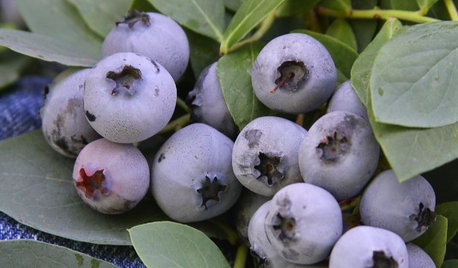Ideas for battling Squash Vine Borers?
raisingmen
12 years ago
Related Stories

EDIBLE GARDENSSummer Crops: How to Grow Squash
Almost foolproof and with cheerful flowers, squash comes in a wide range of varieties to plant in spring
Full Story
EDIBLE GARDENSSummer Crops: How to Grow Pumpkins
Start in spring to grow your own fall decorations and have plenty left for pies
Full Story
EDIBLE GARDENSGarden BFFs? Why Your Vegetables Are Begging for Companion Plants
Foster friendships among plants for protection from pests, pollination support and color camaraderie
Full Story
GARDENING GUIDES10 Easy Edibles for First-Time Gardeners
Focus on these beginner-friendly vegetables, herbs, beans and salad greens to start a home farm with little fuss
Full Story
LANDSCAPE DESIGN15 Great Ideas for a Lawn-Free Yard
End the turf war for good with hardscaping, native grasses and ground covers that save water and are easier to maintain
Full Story
GARDENING GUIDESLessons in the Rewards of Selfless Gardening
Let go of gardening for your own vision and watch the garden’s own true vision come forth
Full Story
GARDENING GUIDES15 Favorites for Your Summer Edible Garden
Get your summer garden off to a good start with these popular fruits and vegetables
Full Story
EDIBLE GARDENSHow to Grow Your Own Sweet Summer Crops
This guide will help any gardener get started on growing the freshest warm-season veggies and berries for summer
Full Story
SUMMER GARDENINGHouzz Call: Please Show Us Your Summer Garden!
Share pictures of your home and yard this summer — we’d love to feature them in an upcoming story
Full Story
GARDENING GUIDESSmall Carpenter Bees Are Looking for a Home in Your Plant Stems
Provide flowers and nesting sites in your garden for this beautiful, tiny, metallic blue wild bee — your plants will thank you
Full StoryMore Discussions







t-bird
keski
Related Professionals
Cary Landscape Architects & Landscape Designers · Richmond Heights Landscape Architects & Landscape Designers · Tempe Landscape Contractors · Canton Landscape Contractors · Damascus Landscape Contractors · Federal Way Landscape Contractors · Fort Wayne Landscape Contractors · Lakewood Landscape Contractors · Mercedes Landscape Contractors · New Braunfels Landscape Contractors · Oklahoma City Landscape Contractors · Rosemount Landscape Contractors · Wailuku Landscape Contractors · Forest Hill Landscape Contractors · Vadnais Heights Landscape Contractorsscarletdaisies
veeta
digdirt2
t-bird
scarletdaisies
scarletdaisies
lavender_lass
Jon_dear
t-bird
glib
elisa_z5
growsy
ctjames
pumpkins4u
raisingmenOriginal Author
alpidarkomama
Edymnion
lizzygracepond
dancinglemons
Katamaca
JenniferHyatt
jmputnam
cbfindlay
daninthedirt (USDA 9a, HZ9, CentTX, Sunset z30, Cfa)
ourhappyhome
cbfindlay
wertach zone 7-B SC
Creek-side
newyorkrita
daninthedirt (USDA 9a, HZ9, CentTX, Sunset z30, Cfa)
Christian
newyorkrita
newyorkrita
2ajsmama
Creek-side
Christian
daninthedirt (USDA 9a, HZ9, CentTX, Sunset z30, Cfa)